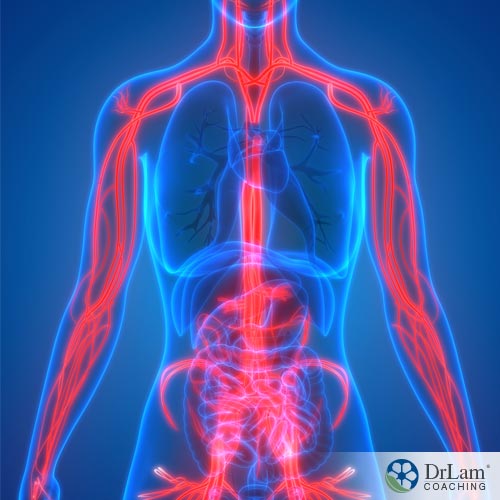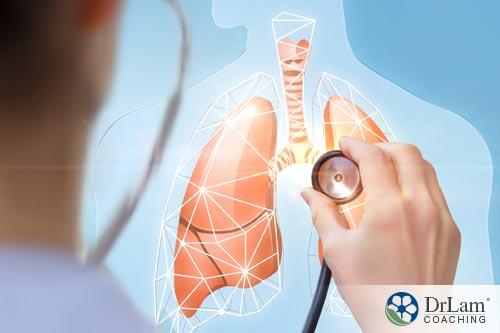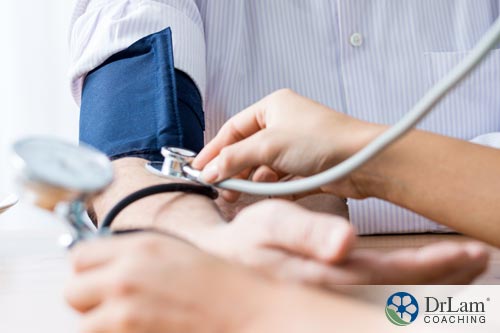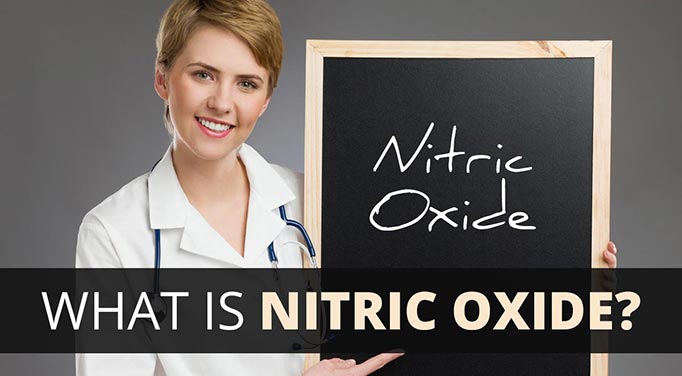 Nitric Oxide (NO) is now one of the most studied gases, and in turn one of the most studied supplements, in medical science, even though its discovery was quite recent. But there’s a reason for this boom in studies being published on this miracle molecule, especially in the last two decades.
Nitric Oxide (NO) is now one of the most studied gases, and in turn one of the most studied supplements, in medical science, even though its discovery was quite recent. But there’s a reason for this boom in studies being published on this miracle molecule, especially in the last two decades.
NO has a half-life of less than one second yet it has been implicated in important health matters ranging from cardiovascular disease to penile dysfunction, to athletic performance.
In fact, some of the findings on NO - how it functions as a signaling molecule in the vascular system and its role in blood pressure control - were so groundbreaking that the scientists who made these discoveries – Louis Ignarro, Robert Furchgott, and Ferid Murad - won the Nobel Prize in Physiology in 1998. They even discovered that NO can selectively mediate specific cell signaling events.
Cell signaling is the communication that occurs between cells, and it is usually done through chemical signals, or signaling molecules, that are secreted by sender cells into the extracellular matrix and then float over to the recipient cells. Not every cell will have the capacity to receive certain messages; only the cells with the correct receptor for the signaling molecule can receive them. And once the cell receives the message, changes inside this cell are triggered until they create a response.
NO is one such signaling molecule, and its importance cannot be overstated. NO is involved in modulation in almost every organ system in the body, including memory, angiogenesis, inflammation, autoimmunity, neurotransmission, stroke, hypertension, wound healing, penile erection, tumors, platelet aggregation, gastrointestinal motility, neural degeneration, atherogenesis, nephritis, pathogens, asthma, insulin signaling, gene regulation, hormone secretion, stem cell proliferation, stem cell differentiation, hemoglobin delivery of oxygen, blood coagulation, tissue transplantation, and many others.
 Just from this list, you can see how NO can affect all aspects of health, and why it is considered one of the holy grails of disease prevention and recovery, as well as a central part of regenerative medicine and anti-aging technology. But despite its importance, which is well known by the scientific and medical community, most people are not aware of its role in their health, and many are not even aware of its very existence.
Just from this list, you can see how NO can affect all aspects of health, and why it is considered one of the holy grails of disease prevention and recovery, as well as a central part of regenerative medicine and anti-aging technology. But despite its importance, which is well known by the scientific and medical community, most people are not aware of its role in their health, and many are not even aware of its very existence.
Although NO is produced by the body, its production slows down with age or from certain health conditions, creating an ever-increasing risk for cardiovascular events and other health issues. Supplementation and products are on the market, but there are a lot of differences in the quality and effectiveness of these products, and so it is important that you first educate yourself on these nuances before you jump on the NO supplementation bandwagon.
You’ll also want to take extra care with any kind of supplementation or changes to diet and lifestyle if you suffer from Adrenal Fatigue Syndrome (AFS) or any dysregulation of the NeuroEndoMetabolic (NEM) Stress Response. Though NO may be helpful on your journey of recovery, you’ll want to first ensure there are no contraindications or complications before trying it out.
Until recently, nitric oxide was thought of as just a vasodilator - an agent that dilates smooth muscles and blood vessels, therefore, reducing blood pressure and increasing blood flow. But more recently, studies are showing that NO goes far beyond that simple yet important task.
NO has been shown to play a key role in the regulation of vital biological functions such as gastrointestinal and urogenital tracts, immunology, the cardiovascular system, the nervous system, regeneration, cell proliferation, and the respiratory tract.
When you think of respiration, you probably think about oxygen exchange and carbon dioxide excretion. But actually, respiration is a three-gas system, and nitric oxide is part of the respiratory cycle. NO is required for the delivery of oxygen from the lungs to the tissues by red blood cells.
The process of hemoglobin going through the arterial to venous transit through the capillaries must have NO molecules bound to the cysteine residue on a beta chain of hemoglobin in order for the oxygen to be offloaded or released. And from what we’re learning, in most cases, blood flow to tissues is actually more important than the amount of oxygen carried by hemoglobin, and blood flow is increased by NO.
 Hypoxia is a state of not having enough oxygen delivered to your tissues. This can be caused by low oxygen levels in the blood, called hypoxemia, or by not having the oxygen in the blood offloaded or released into the tissues. Hypoxia can be a dangerous state that can affect all organs, including the brain and liver. This can lead to brain fog, difficulty concentrating, and fatigue. Every single system and organ in your body needs sufficient oxygen to operate properly.
Hypoxia is a state of not having enough oxygen delivered to your tissues. This can be caused by low oxygen levels in the blood, called hypoxemia, or by not having the oxygen in the blood offloaded or released into the tissues. Hypoxia can be a dangerous state that can affect all organs, including the brain and liver. This can lead to brain fog, difficulty concentrating, and fatigue. Every single system and organ in your body needs sufficient oxygen to operate properly.
The causes of hypoxemia – the lack of oxygen in the blood – can range from asthma to lung diseases like bronchitis, to lung trauma and injury, to heart problems, to anemia, to medications that disrupt breathing, to cyanide poisoning. Hypoxia, on the other hand, can be caused by the above, but also by insufficient nitric oxide.
Most people with illnesses will be deficient in nitric oxide, so even if you get their oxygen saturation up to 98%, they’re still systemically hypoxic as the oxygen is not released from the hemoglobin to the tissues due to the lack of NO. In these cases, you can’t fix the systemic based issues without first fixing the NO signaling issue.
Still, it is always important to deal with issues of hypoxia on all levels. So if you suffer from asthma, for example, you must follow your asthma treatment plan, while discussing the possibility of increasing NO production with your doctor.
And make sure you are well aware of symptoms of hypoxia, including confusion, shortness of breath, rapid breathing, coughing, wheezing, sweating changes in skin color, and faster heart rate. If you experience any of these symptoms, you must call for an emergency service immediately.
Your endothelium cells are all covered with a layer of smooth muscles. When they contract, they get smaller, and you get an increase in blood flow, leading to high blood pressure. When the muscles are relaxed, however, more blood flow is able to deliver sufficient amounts of oxygen. This smooth muscle activates a vital enzyme known as guanylyl cyclase. Nitric oxide binds to this enzyme, which is converts GTP and leads to smooth muscle relaxation. Sildenafil and other pd5 inhibit the conversion of GTP, which leads to an increase of accumulation. That’s why many who take medications such as Viagra don’t see much improvement in their sexual function; these medications don’t eliminate the underlying symptoms. Erectile dysfunction is also endothelial dysfunction and impacts countless men and women worldwide. Erectile dysfunction is simply the inability for you to achieve or reach erection that is suitable for sexual intercourse. It’s an underlying condition and sets at an early stage of the inability to generate nitric oxide, leading to cardiovascular conditions and more. When you get sexually stimulated, there are certain neurotransmitters that naturally lead to an increase in blood flow to the penis. This then leads to the generation of nitric oxide, once your brain sends a chemical signal via your nerves that signal to the smooth muscles in the penis to relax. The blood flow increases, leading to stiffness. If the blood muscles cannot be properly transported, it leads to erectile dysfunction.
It’s natural for your body to decrease its capability of generating nitric oxide more than ten percent a decade. That leaves you with half the amount of nitric oxide by the time you are fifty years of age; which explains why you have lower energy and strength in various physical activities in your life, such as sports, everyday tasks, and including your sexual desire and stamina.
Cardiovascular disease is the number one killer of men and women in industrialized nations. It is a public health disaster beyond control… one in every four Americans will die from it, reaching around 610,000 deaths every year. That’s the equivalent of four jumbo jets crashing every single day. Cardiovascular disease costs the US over $250 billion a year in health care and lost productivity.
Knowing these statistics should make us all very conscious of cardiovascular disease risk factors. And contrary to popular belief, cholesterol is not one of them. They include the following:
Digging a little deeper, we notice that all of these risk factors have a couple of things in common. First of all, they decrease blood flow, and there is not a single human chronic disease that is not associated with low blood flow.
Secondly, they all lead to a reduction in the production of nitric oxide, which in turn is also related to low blood flow. That’s because when the endothelial cells – the one-cell-thick lining of blood vessels - release nitric oxide gas, this gas facilitates blood flow. You can imagine it like the air on air hockey tables that facilitates the movement of the pucks.
 Aging is another cause of NO production loss. In fact, with aging, people lose up to 85% of their ability to make NO. And the loss of NO is associated with atherosclerosis – the narrowing of the inside of arteries due to plaque build-up. By decade, it looks something like this:
Aging is another cause of NO production loss. In fact, with aging, people lose up to 85% of their ability to make NO. And the loss of NO is associated with atherosclerosis – the narrowing of the inside of arteries due to plaque build-up. By decade, it looks something like this:
This information supports the famous quote by the 17th Century English physician Thomas Sydenham: “a man is as old as his arteries.” The loss of nitric oxide precedes the structural changes in arteries sometimes by decades.
So what does this mean regarding NO production? Could it mean that if we slow down, or reverse NO production loss we can prevent the cycle of fat deposition, plaque build-up, stiffening, and rupture of the arteries, and perhaps even neutralize the number one killer of men and women?
This is a question many medical scientists are asking at the moment, and recent studies are showing great results. Some famous physicians, such as Dr. Caldwell Esselstyn, have used this understanding of the power of nitric oxide to protect blood vessels, inhibit plaque formation, and increase blood flow, as a central part of treating cardiovascular disease.
In his books and protocols, he uses diet to decrease endothelial cell injury thereby increasing NO production. By asking his patients to eat a lot of green leafy vegetables, they naturally consume more nitrates, which is then naturally converted to nitrite by saliva, which is then naturally converted to nitric oxide by stomach acid.
But, still, it is definitely not as simple as supplementing with extra nitric oxide, or eating a diet high in NO-rich green leafy vegetables, as we will see now.
NO production occurs via two possible pathways, each one providing around half of the total:
The NO synthase enzyme becomes uncoupled with age, and this is why you get an age-related decline in NO production. Enzyme uncoupling usually involves the disruption or alteration of an enzyme through functional or physical dissociation.
 Although one pathway can compensate for a decline in the other, there are cases where both pathways are in decline, and that’s when there is a real cause for concern. But there are certain considerations that must be taken into account before you try to jump-start NO production through either pathway.
Although one pathway can compensate for a decline in the other, there are cases where both pathways are in decline, and that’s when there is a real cause for concern. But there are certain considerations that must be taken into account before you try to jump-start NO production through either pathway.
First of all, your body can’t use extracellular L-arginine to produce NO. NOS has to use intracellular L-arginine from L-citrulline to produce NO. Also, L-arginine utilization is under the control of NOS function, and most people with NO deficiency have been found to have dysfunctional NOS.
So, if your NOS is not working properly but you’re supplementing with L-arginine, it’s like giving gas to a non-functioning engine, without first fixing the engine that converts the gas, you’ll just be loading up on gas without being able to use it. In that case, the first thing that needs to happen is for you to get the supporting co-factors to recouple NOS.
And if your NOS is uncoupled, high doses of L-arginine will actually do you more harm than good, so be very aware of this if you’re thinking of trying L-arginine. Also, L-arginine can activate the herpes virus; so make sure you get checked before taking a supplement or product.
© Copyright 2018 Michael Lam, M.D. All Rights Reserved.
Nitric Oxide is one of the best-kept secrets of the health and fitness industry. Its uses range from protecting the heart and blood vessels, to increasing blood flow, to improving athletic performance, to anti-aging. Learn how to use it to your advantage.

